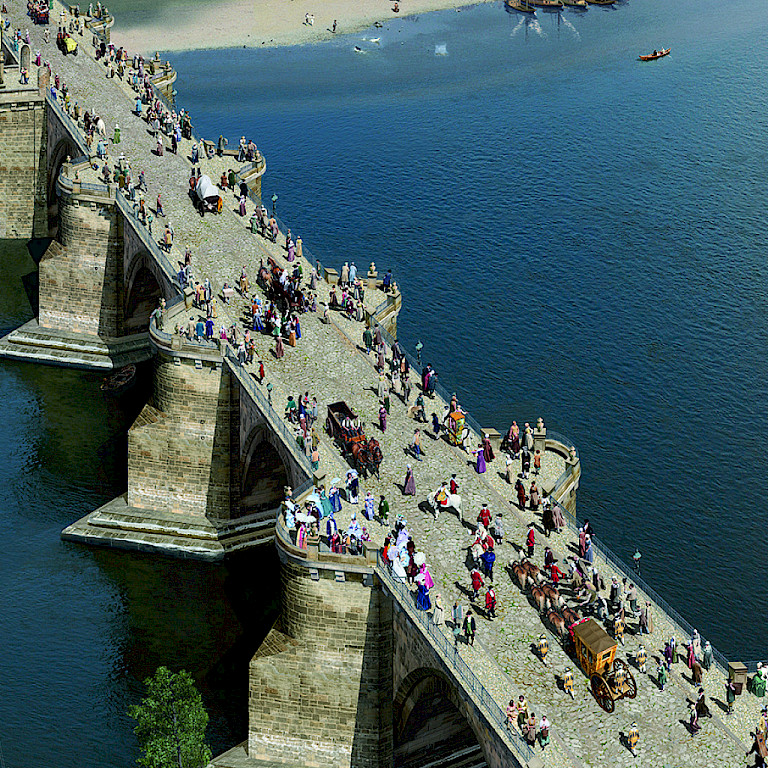
Blick auf die Augustusbrücke mit der königlichen Kutsche
Foto: Asisi Panometer
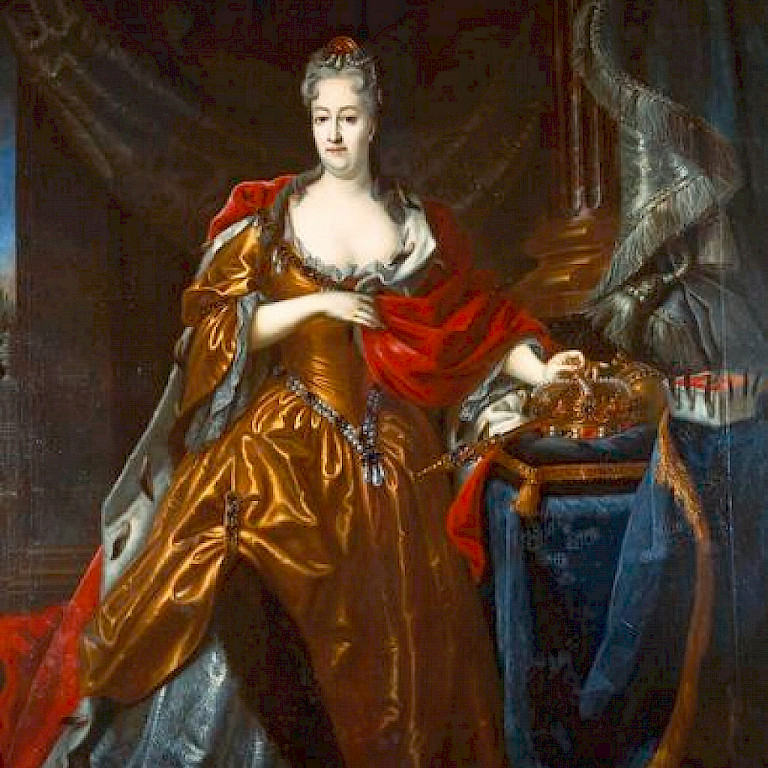
Louis de Silvestre, Christiane Eberhardine von Brandenburg-Bayreuth, die erste Frau Augusts des Starken
gemeinfrei
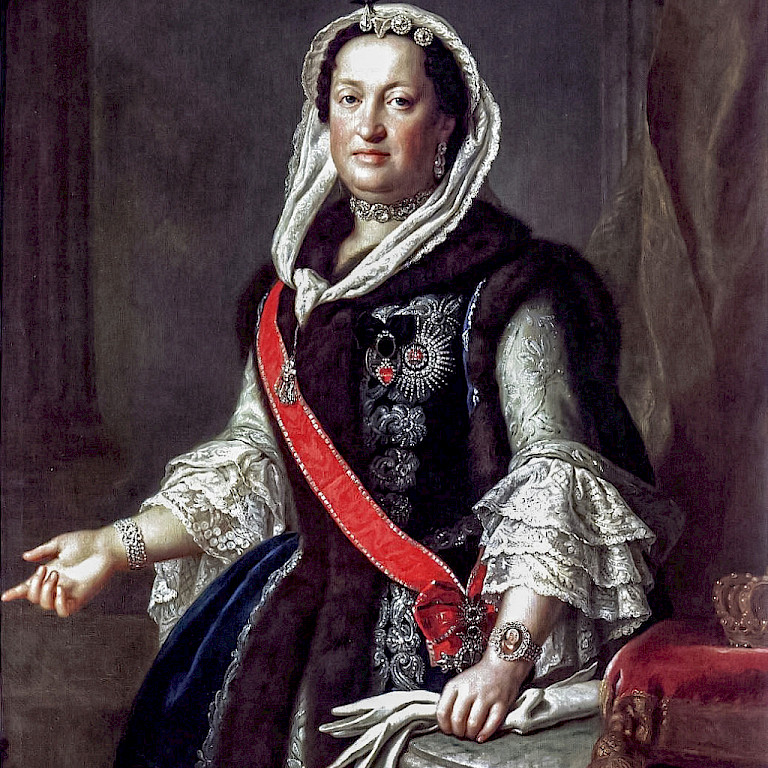
Maria Josepha von Österreich, die Initiatorin des Alten Katholischen Friedhofs in Dresden
gemeinfrei
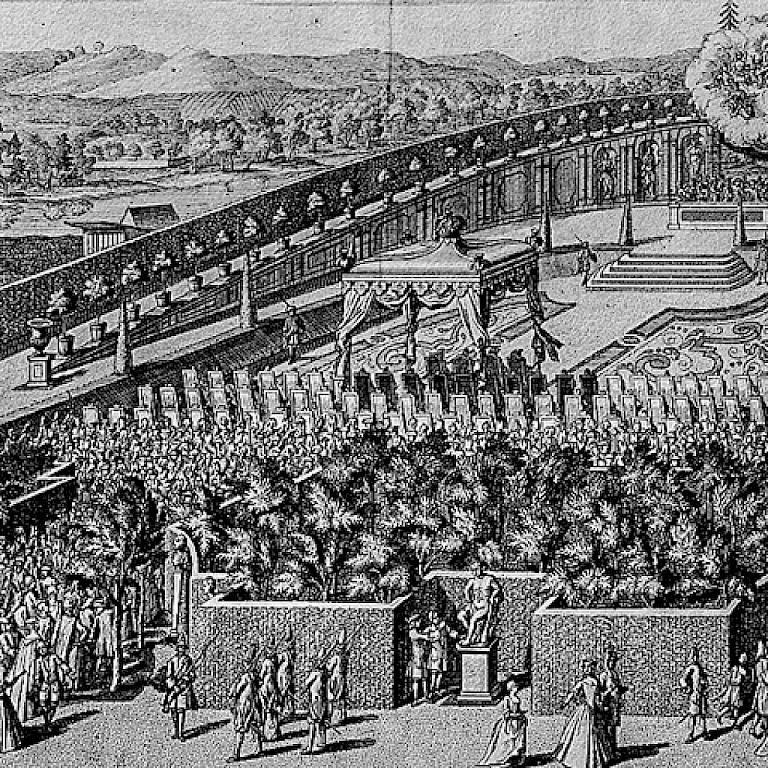
Vermählung des Kurprinzen mit Maria Josepha im Jahr 1719
Deutsche-Fotothek_df_hauptkatalog_0113066
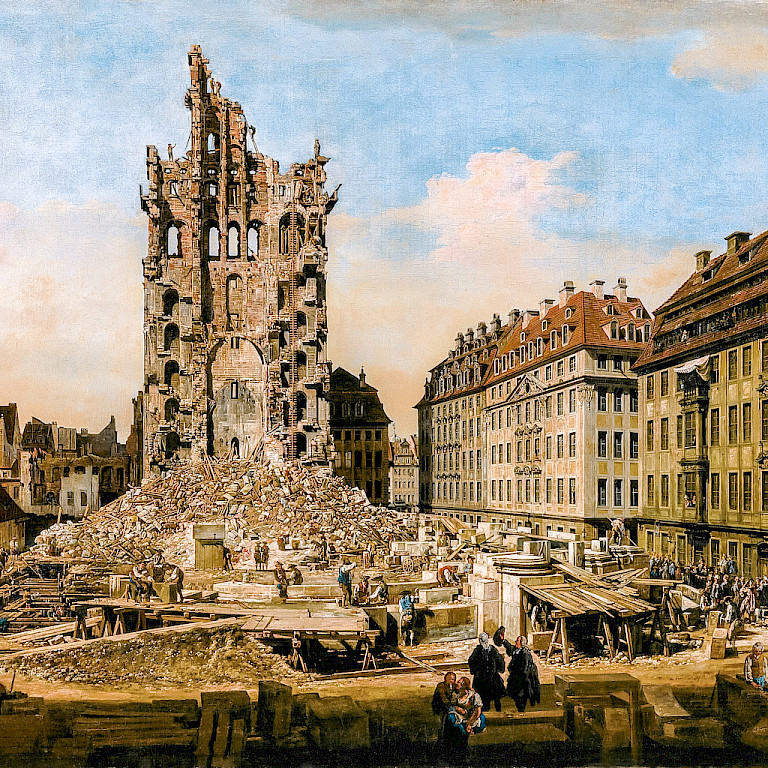
Bernardo Bellotto, Die Ruine der Kreuzkirche, 1765
gemeinfrei
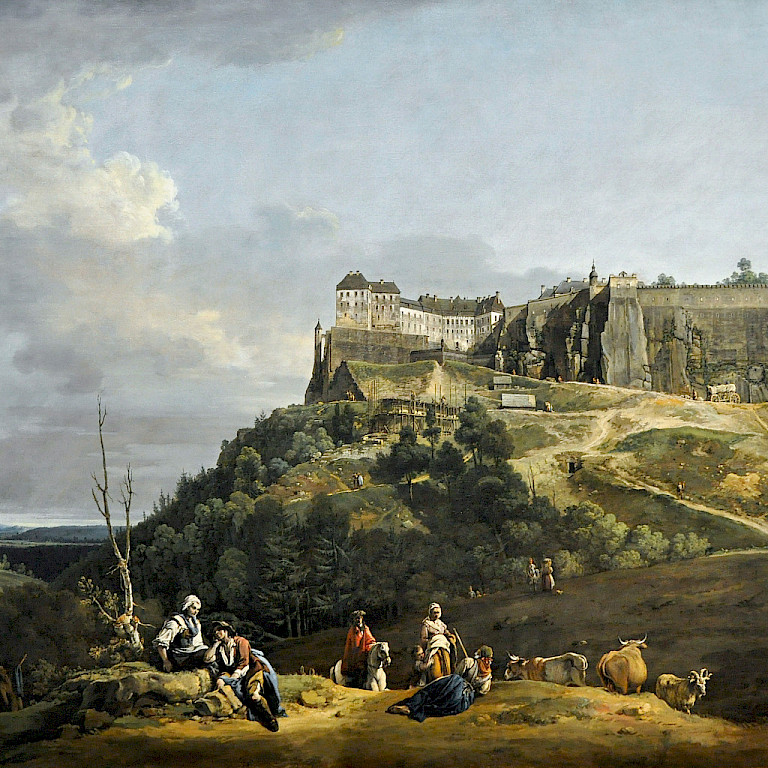
Bernardo Bellotto, Die Festung Königstein, 1756-1758
gemeinfrei
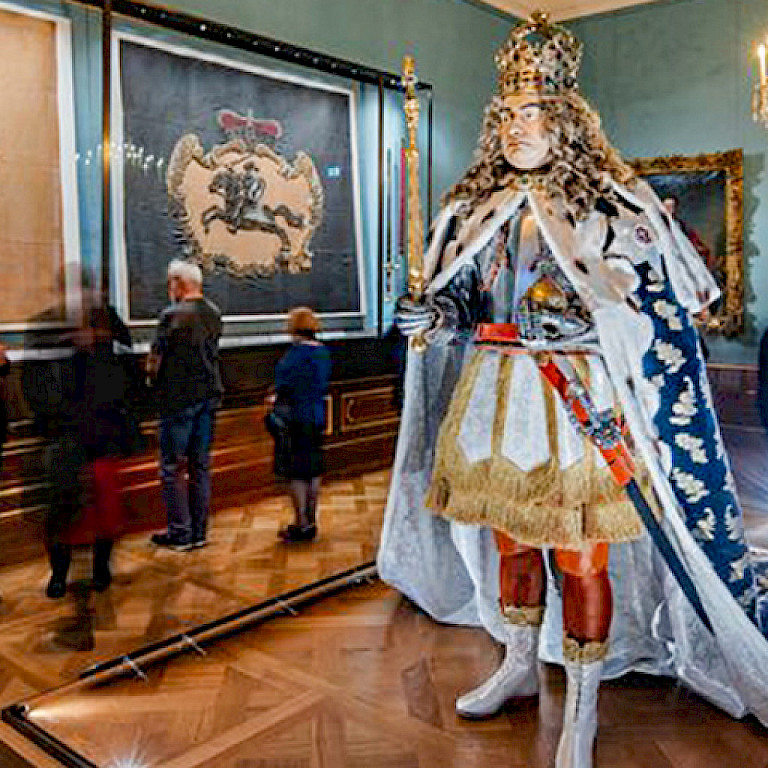
Staatliche Kunstsammlungen Dresden
06 THE KING
There is a good reason why King Augustus the second carried the nickname “the Strong”. In 1711, at the age of 40, he is said to have broken a horseshoe with his bare hands. This can still be seen today in the Royal Palace’s armoury. The King also staged himself as a Saxon Hercules in an artistic way. In this portrait that you can see, Augustus is wearing a coat trimmed with leopard skin: an allusion to the mythical hero Hercules, who killed the invulnerable Nemean lion and since wore its fur as a cape.
Rumours were circulating about the fertility of the Wettiner: It is said he had fathered more than 300 children. Historically, the existence of nine children can be proved. However, they come from six different women and so a tiny bit of truth lies in the legend.
Augustus was married to Christiane Eberhardine, the Margravine of Bayreuth from the House of Hohenzollern. You can see her portrait on the right side of that of her husbands. Their only child was a son, Crown Prince Frederick Augustus, later to become King Augustus the Third. All further children of Augustus the Strong were fathered illegitimately with his mistresses. Countess Cosel gave birth to three children, her picture is also here.
After the birth of the heir to the throne, Chistiane Eberhardine, withdrew with her son from the Dresden court. As the child should continue the reign of his father in Poland and Saxony, Augustus made his son accept the catholic faith, against the will of his strictly protestant wife.
The bride for the Crown Prince was a princess of the highest rank: Maria Josepha Archduchess of Austria and daughter of the Hapsburg Emperor. This seemed to make the rise to imperial rule possible for the House of Wettin.
The wedding celebrations in September 1719 became the epitome of baroque splendour. For four weeks, tournaments, parades, fireworks and gondola rides in and around Dresden thrilled the guests. One of the most important venues was the Zwinger, which was specially built for the wedding celebrations.
Frederick Augustus and Maria Josepha’s long marriage produced fifteen children. After his fathers death on February the first 1733, Frederick Augustus took over the electorship and in 1734 as King Augustus the Third, the polish throne.
At the beginning of the Seven Year War in the year 1756, the King had to flee from the advancing Prussian troops to the fortress in Königstein with his prime minister Heinrich von Brühl. It was only in April 1763 that he returned from his exile in Poland to a politically, military and economically shattered Saxony and his heavily destroyed royal seat Dresden.
With his death on the 5th of October 1763, the saxon-polish union ended and so did the Augustan era. Elector Frederick Christian worked on the reconstruction of his land with passion but only after 74 days in office he caught smallpox and died. The stabilisation and renovation of the Electorate Saxony made further progress.